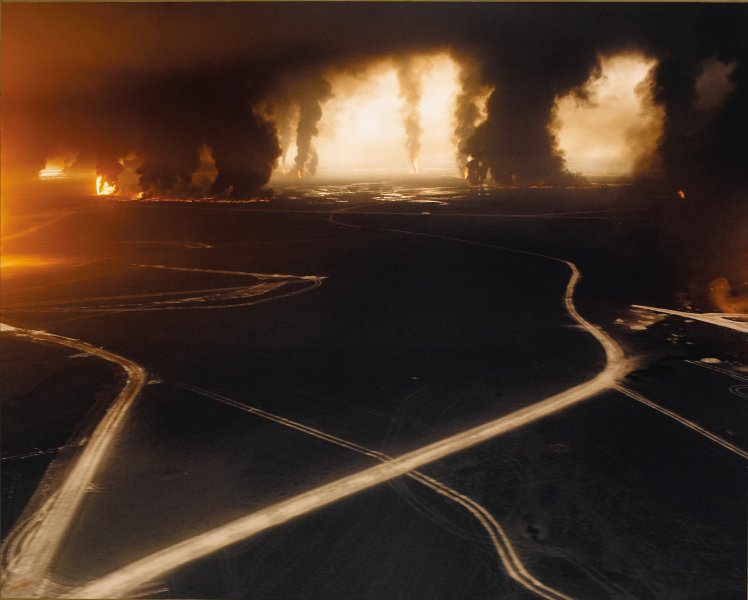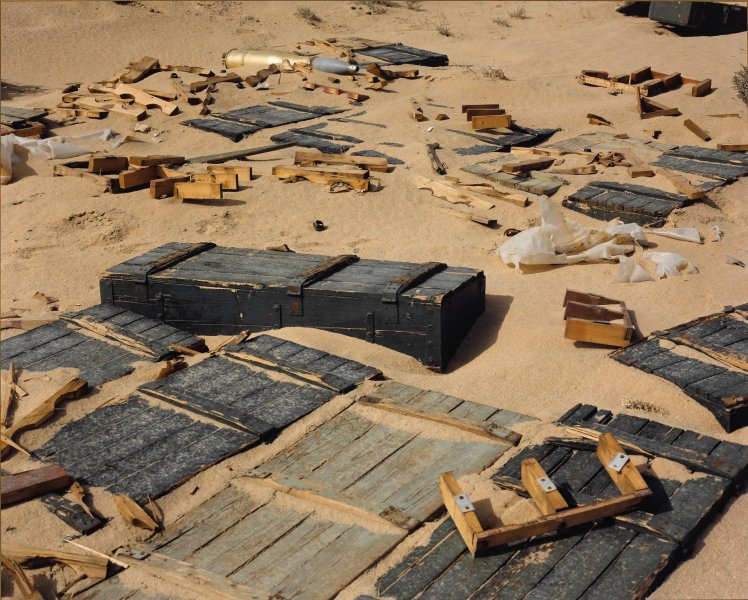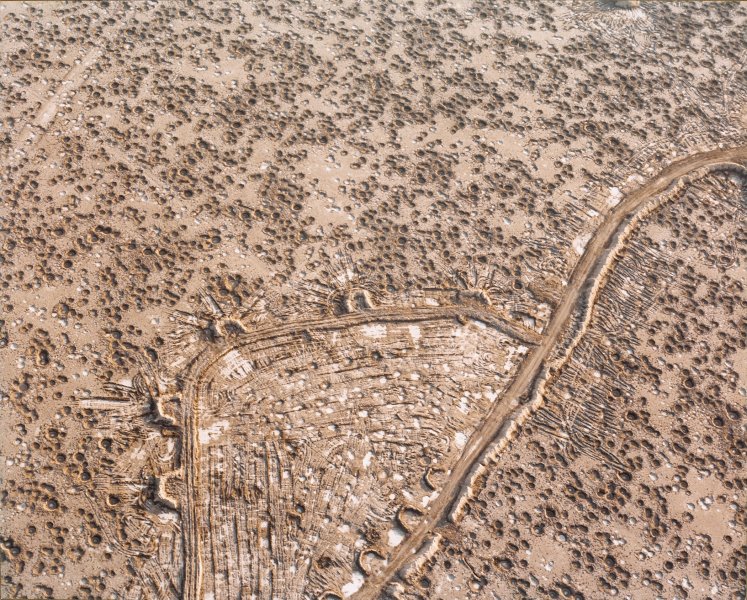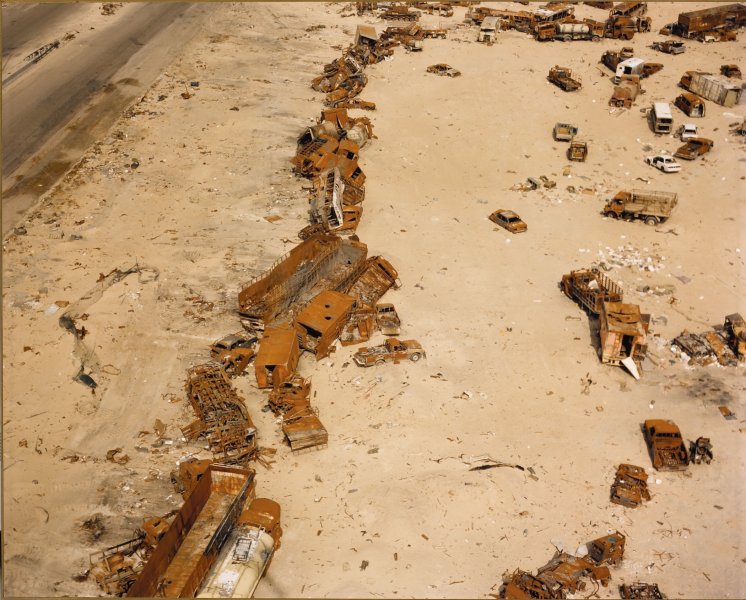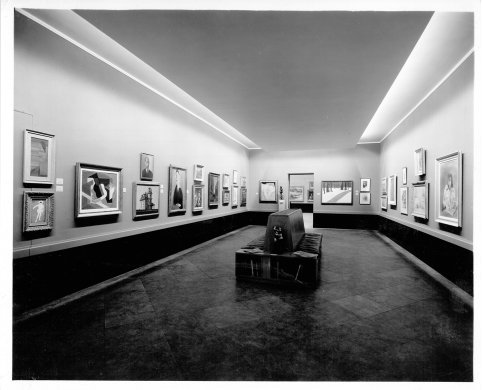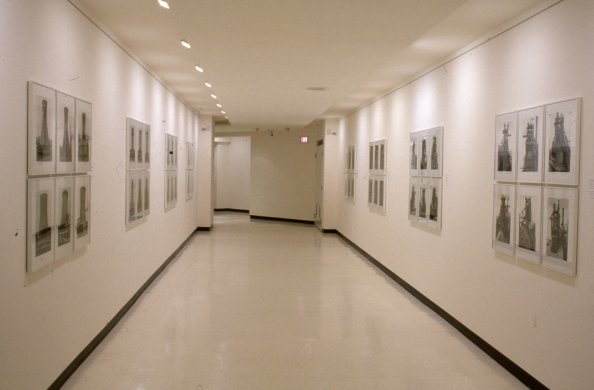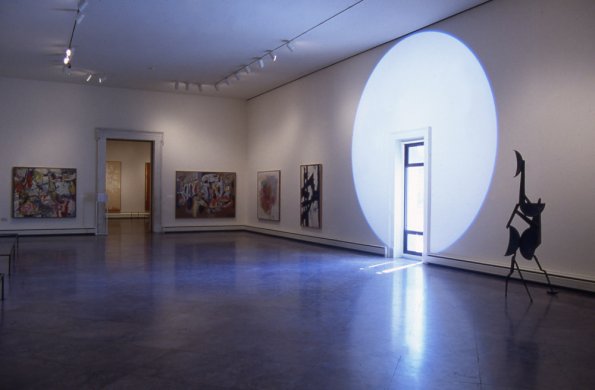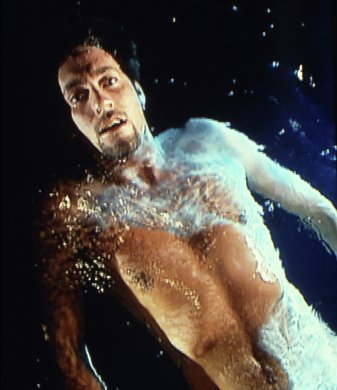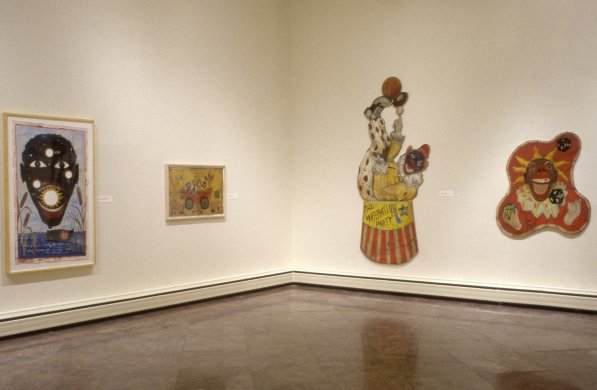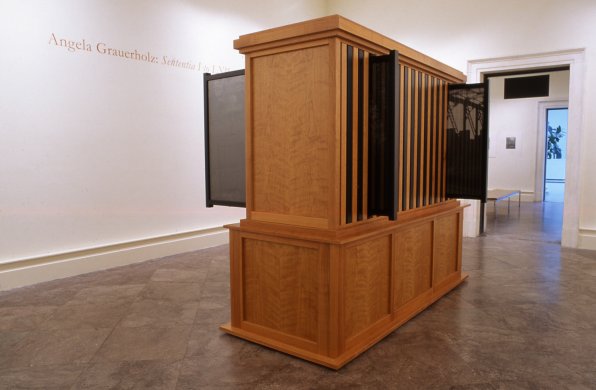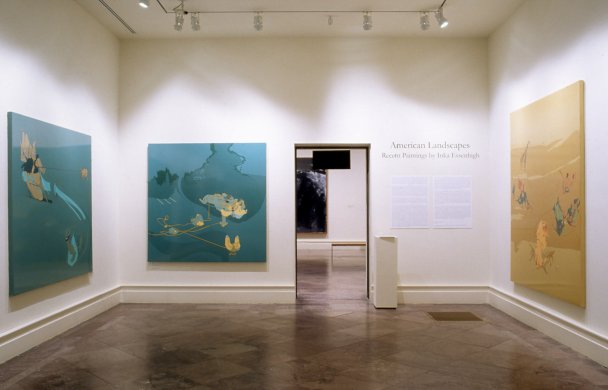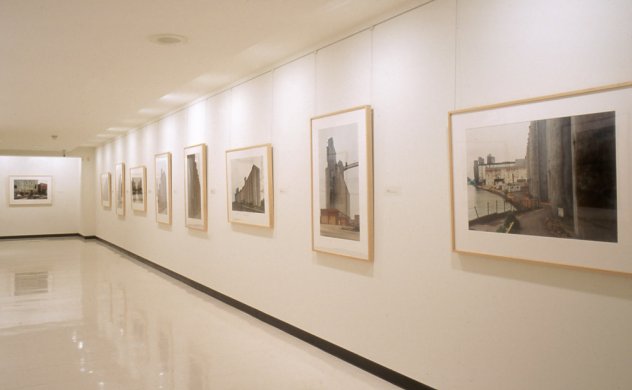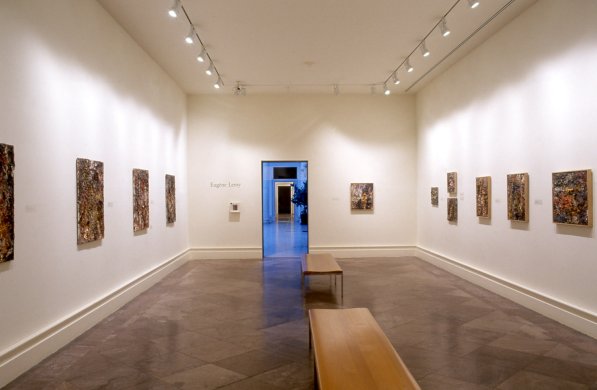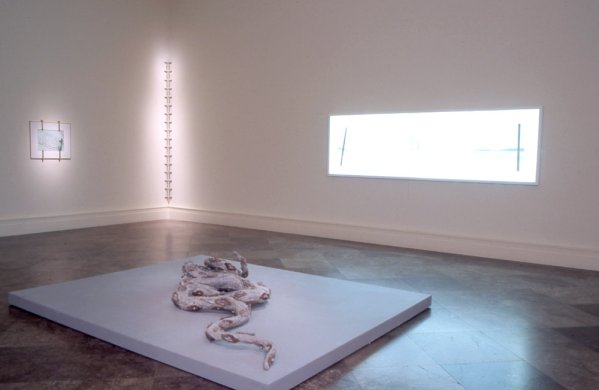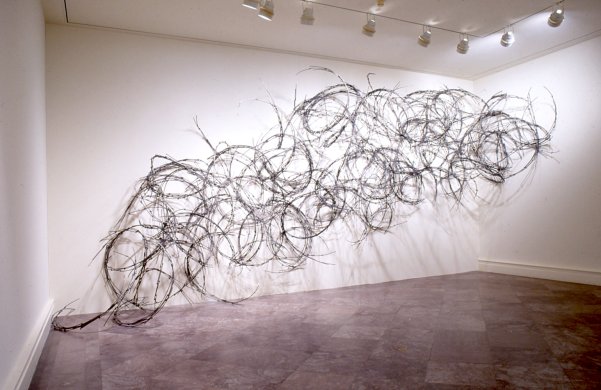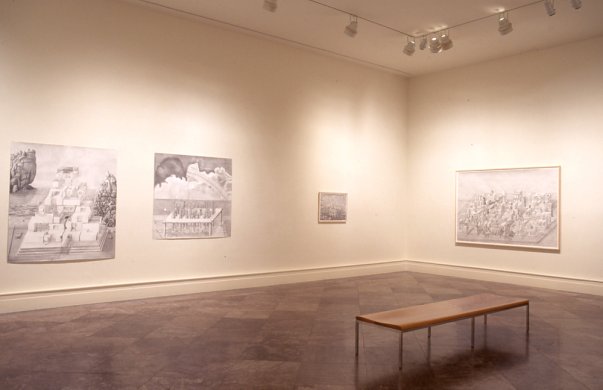New Room of Contemporary Art: Sophie Ristelhueber
Saturday, April 4, 1998–Sunday, June 7, 1998
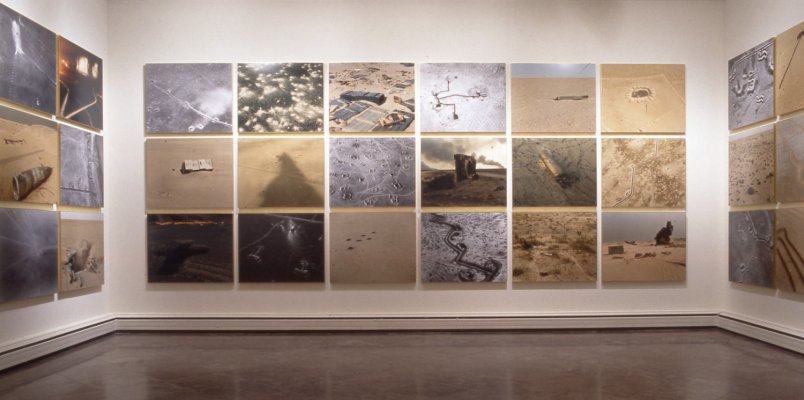
Installation view of New Room of Contemporary Art: Sophie Ristelhueber. Photograph by Tom Loonan.
1905 Building
In 1991, French artist Sophie Ristelhueber traveled to Kuwait to record the physical aftermath of the Persian Gulf War. Seventy-one images filled with beauty and dread comprise her resulting artist's book, Fait (Koweit, 1991). From this series, Ristelhueber produced large-format photographic prints that she has shown in groups. In its entirety, Fait (a French word that means both "done" and "fact") is a monumental visual record of a short and politically awkward war.
Although the images themselves are reminiscent of documentary photography, photojournalism, and surveillance stills, their meaning undergoes a transformation through large-scale, fine art presentation in a museum setting. Concentrating on single events—sometimes even single objects—and the effects of various weapons on the desert landscape, Ristelhueber’s pictures take on an abstract and distant quality, at once beautiful to look at and repulsive to recognize. Of this work, Ristelhueber has said, “Why must only the media and the military give us information about war? Meaningful art can be made from this material too.”
The Albright-Knox had the privilege of premiering Ristelheuber's exhibition before it traveled on to the Contemporary Art Center of Virginia in Virginia Beach and The Power Plant in Toronto.
New Room of Contemporary Art: Sophie Ristelhueber was accompanied by a lecture given by the artist on April 4, as well as a brochure with an essay by Curator Marc Mayer and five color reproductions of Ristelhueber's work.
This exhibition was organized by Curator Marc Mayer in conjunction with the New Room of Contemporary Art series.
About the New Room of Contemporary Art
The concept of the New Room of Contemporary Art echoes the mission and philosophy of its predecessor, the Room of Contemporary Art. Established in 1939, the Room was envisioned as a both a physical site devoted solely to the continuously rotating presentation of new art within the museum and a means to reinvigorate and reaffirm the museum’s dedication to collecting the art of its time.
It was managed by a special independent committee initially consisting of Buffalo attorney Philip J. Wickser (who helped to conceive the room and who drafted its charter), Seymour H. Knox, Jr., Albright Art Gallery Director Gordon B. Washburn, and artists Charles E. Burchfield and Anna Glenny Dunbar, both of whom called Buffalo home. Through the Room of Contemporary Art fund, the museum acquired Fernand Léger's La fume (Smoke), 1912; Joan Miró's Carnaval d'Arlequin (Carnival of Harlequin), 1924–25; and Henri Matisse's La Musique (Music), 1939, among many others.
Exhibition Sponsors
This exhibition was made possible, in part, by Étant Donnés, the French-American Endowment for Contemporary Art.
This exhibition was made possible, in part, by Étant Donnés, the French-American Endowment for Contemporary Art.
